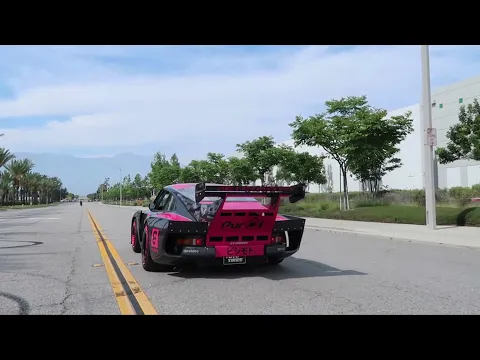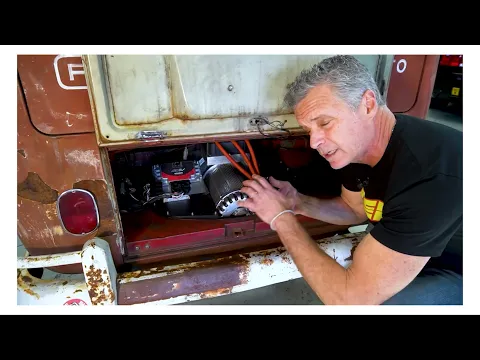EV Electrical Systems BASICS!
May 23, 2024The move toward vehicle electrification presents enthusiasts with the new frontier for high-performance propulsion for both motorsports vehicles and high-performance street vehicles. The future is coming now as we see the integration of electric propulsion being adopted en masse at OEM level in motorsports, where new classes and racing series are being created and, in the performance enthusiast segment, this video provides an overview of the common
electrical
systems
found in a powersports or EV conversion application and the components that are typically included in the differentsystems
. Eevee'selectrical
systems may seem complex, but if we peel back the layers, it becomes clear that it is not as complex as one might think.In general, these systems can be divided into three subsystems: a high-voltage circuit, a low-voltage circuit, and multiple CAN networks. High voltage or high voltage systems are usually powered by a high voltage battery. over 200 volts and includes contactors that transmit power from the battery to high voltage components such as motor inverter combos and a DC to DC converter. A charger built into the high voltage circuit is used to convert AC power from the grid into high voltage DC power. To charge the high-voltage battery, common high-voltage system components include the battery pack, on-board charging unit, contactors, intelligent shunt motor(s), an inverter(s), if more than one motor is used for propulsion, battery packs.
Batteries are generally made up of hundreds of individual lithium-ion cells and are available in a wide variety of configurations, these packs generally range between 200 and 800 volts and common packs used in conversions may include those from Tesla, Chevy, Nissan or other manufacturers. of original equipment with battery electric or hybrid vehicles, although technically not a direct part of the high voltage system the charging port connects to the high voltage system and allows you to charge the vehicle from a 100 volt or 220 volt outlet using a charging plug a dc to dc converter acts as an alternator in an internal combustion engine ICE motor or vehicle it is what allows the low voltage battery to stay charged using power in the high voltage system a smart shunt has been used like the isabella hit ivts series smart shunt for battery management but we incorporate it and recommend including it as an integrated circuit voltage and temperature sensor along with the bms, the motor or motors are what drive the vehicle and are controlled by an inverter or investors.
Each motor requires an inverter to operate. In this example you see a Cascadia Motion ds-250-115 dual stack motor. set requiring an inverter for each motor an inverter is a type of controller that takes high voltage dc power from the battery packs and outputs a regulated ac voltage to the motor or motors for vehicle propulsion the aem vcu communicates with the inverter via CAN bus to control power delivery and implement performance and safety features, and that's where the magic starts to happen. Things like torque management, on-the-fly launch control, power levels, and robust safety checks performed by the VCU before the high-voltage system activates allow you to truly personalize the ride. features of your electric vehicle and prevent damage in the event of a component failure by ensuring that the system does not activate until all pre-system checks on the vehicle circuits are completed and everything is verified to be working properly.
Most enthusiasts will be familiar with low voltage. circuit, as this system is common on internal combustion engine vehicles to power light fixtures and the like, one of the many advantages of electric vehicle conversions is the ability to retain the existing low voltage system of a vehicle with internal combustion engine, as we mentioned, a DC to DC converter converts the energy. from the high voltage circuit to charge the 12 volt battery that supplies power to the low voltage auxiliary devices, but these devices still require a method of control and unless you want to rewire your low voltage accessories to individual switches , we have created a more elegant solution.
In our pdu8 power distribution units, a big advantage of the can bus is that it allows you to control 12 volt switch devices with our vcu using pdu8 power distribution modules strategically located throughout the vehicle, so instead of wiring Individual switch functions with multiple relays for each. You can wire your switched functions to the PDW8. Connect your PDU8 to the VCU using a simple two-wire connection and then program and control your functions using the AEM CAL software for the VCU. These small, rugged units can be daisy-chained to control multiple switching devices. switching allowing you to place them closer to the functions they control for easier wiring and since programming is done in the vcu there is no need to carry dedicated spares for each module in the rear of the vehicle you can see a pdu8 that It is programmed to activate the inverters and the cooling pump and control the activation of the taillights and reverse lights.
A second PD-W8 near the front passenger seat footwell controls the CAN keypad and digital dash display, while two additional PDU8s in the front activate the contactors for the high-voltage system and control the headlights. CAN bus networking allows multiple devices to share data over a two-wire network, greatly simplifying wiring. Our VCUs can transmit and receive data from multiple CAN networks, allowing them to monitor multiple components to ensure optimal performance. And security, the VCU 300 receives data from two CAN networks and communicates with the laptop on a third network. A network communicates and receives data from the motor inverter cooling pump and PD-8 power distribution units from this network.
The vcu can control the inverters. and directs control of switched devices through pdu8 modules that control everything from vehicle activation status and activation of cooling pumps to regulating battery temperatures to commanding driving mode via keypad. VCU programmed and control flashing lights and other accessories. The ability to connect multiple CAN networks is another reason we call our VCUS the adult in the room with AEM EV. Enthusiasts no longer have to rely on an alphabet soup control model for their EVs, where devices in each subsystem operate independently and do not communicate with each other, our VCUs and can expansion devices, like our PDU8 keyboard , digital dashboard displays and battery management system, integrate all of these systems and the VCU receives data from each device, allowing the calibrators to achieve a level of control and safety performance on par with oe vehicles with the proper configuration , the days of welded contactors, overheated batteries and overcurrent shutdowns are over, combined with safety features such as redundant pre-checks of systems before starting, voltage regulation to the motor based on battery temperatures, safety controls in the pedal sensor voltages and more.
Make sure your EV conversion is as enjoyable to drive on your trip as it is on the next car cruise or track day you visit.
If you have any copyright issue, please Contact










